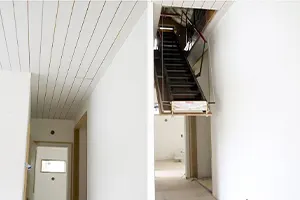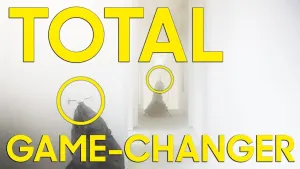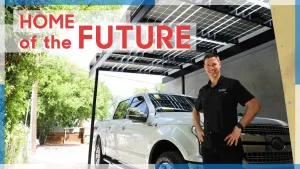6 Things to Know About Implementing a Smart Home
A smart home is one equipped with electronic devices that perform a wide range of tasks that are either controlled remotely or automatically. Smart home automation systems and devices, based on advanced sensor technology, already know what to do in your home and that’s why people are becoming so fond of them.
This year, the global market for smart home devices is expected to grow 26.9% year over year to 832.7 million shipments, according to the International Data Corporation (IDC) Worldwide Quarterly Smart Home Device Tracker. Sustained growth is expected to continue and its predicted that 1.6 billion devices will be shipped in 2023, as consumers adopt multiple devices within their homes and as global availability of products and services increases. So, if you’re building a home, or undertaking a major renovation, and need to transform a traditional one into a more intelligent one, here’s a simple overview of some things to consider.
- Planning
The time for adding it to the build plans for best design and scheduling is ASAP. If you want a whole-house implementation, your architect should be involved (assuming you have one that is savvy).
Questions to consider include:
- What are you automating? Energy? Lighting? Security? Entertainment? All or a part of that list?
- How can you build in flexibility?
- How may needs change over time?
You might want to consider putting in all the infrastructure needed to support a smart home with the ability to implement the bells and whistles when needed.
Start with the applications that are basic—energy use, lighting and security. Expand on that with a “wish list,” killer audio, for example. Also consider where you want to access applications in your home. Consider the use of smart plugs, adapters that convert simple appliances into smart appliances and is controller via Wi-Fi from anywhere.
Now let’s expand on what to consider:
- Connectivity
At the heart of a smart home is a solid home network. A router, modem, cabling, choosing between wired infrastructure, or just relying on wireless. There are many considerations regarding connectivity. A wired infrastructure makes sense for transmitting data, rather than relying only on Wi-Fi, which can at times be unreliable due to interference from nearby networks or signal strength. Building materials can play a huge role. For example, any foil backing, or an underfloor heating system can block Wi-Fi signals.
Whether you choose Cat 5, 5e, or 6 cabling, you might also want to consider cables that combine electrical and data cabling in one. Many decisions are based on what is available in your area, so be sure to check early in the process rather than making expensive modifications downstream. The incoming Internet connection needs to be a fast one, too.
- Environment
A home’s environment, made intelligent, means lighting, temperature, venting, fans, and humidifiers are controlled within the smart system. For smart lighting, investigate sockets that are controlled by a smartphone, light bulbs with built-in sensors that react to movement and also adjust room brightness when occupied.
Thermostats are at the stage where they “learn” based on your setting changes. Eventually, in a smart-home setting, a thermostat will adjust heating and cooling on its own. Whether the sensors are relegated to specific rooms, or a whole house, temperature can be customized for comfort.
Ceiling fans and whole-house humidifiers based on a home’s geographic location are other ways to control comfort level via mobile device. Also important in your environment is the ability to detect changes in temperature and humidity levels that can indicate a water leak. Systems are available that reveal the location of the leak to your smartphone, most likely long before you would have found it, or the resulting mold.
- Security
From door locks to camera systems and smoke/carbon monoxide detectors, smart homes go far to keep us safe. Residents can, through an app, lock and unlock doors, create a virtual key for guests and keep tabs on exactly who has gone in and out.
In the same vein, smart camera systems are available and controlled via mobile device. They are capable of delivering real-time video and notifications and can include motion sensors and face-recognition technology.
- Appliances
Smart appliances have been around for a while but keep on getting better. Vacuum cleaners, washers, dryers, dishwashers, refrigerators all available based on home automation goals. Hub refrigerators now enable grocery ordering and inventory monitoring and dishwashers have smart assist functions.
- Entertainment and more
Audio systems, television and all levels of entertainment are available for implementation in smart home systems. After all, entertainment and energy were the first applications in the smart-home journey.
What might be a surprise, however, is that “smart” has even made its way to the shower. Where you stand in a shower in a smart system can control water delivery. Move far away from the shower head and the flow is reduced. Step closer and flow resumes for rinsing. Claims are that such a system may save as much as utility usage.
Seems overwhelming? Don’t let it be. Identify the services desire, have a secondary list of “nice to have” services. Look at the plans for your home. Where will cameras and music reside? Where can a hub be easily located, where services will be routed to? Will that space provide good ventilation and heat management? Talk to your architect. Most important, though, whether you’re a builder or homeowner is to identify what is possible, what is feasible and sometimes, what is just downright fun.

 Share on facebook
Share on facebook Tweet
Tweet Email
Email Share on Linkedin
Share on Linkedin

















